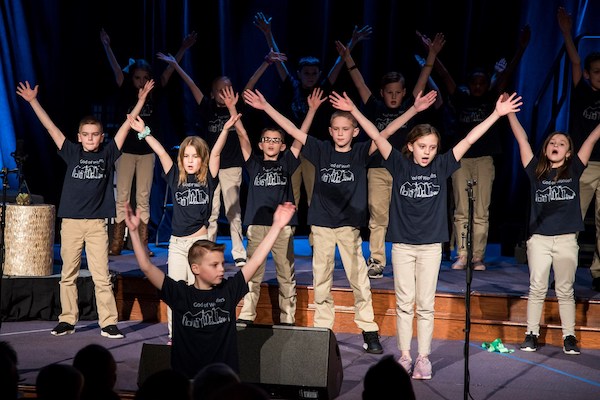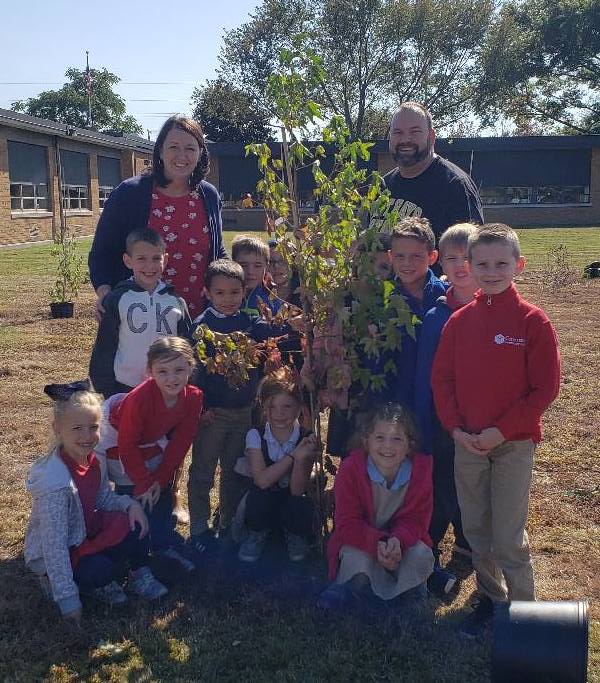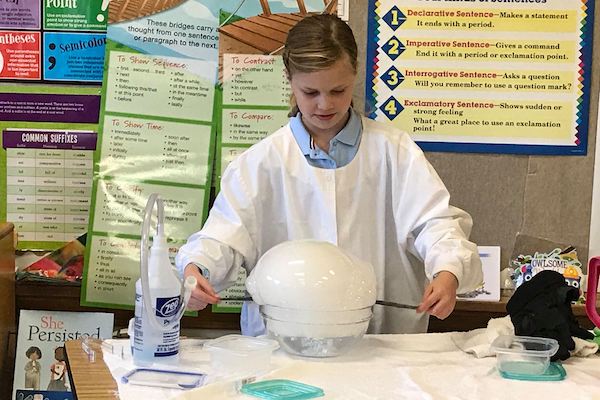Integrated Curriculum
Cornerstone Community School, a private Christian school in Tallmadge, Ohio, offers an education founded on the Word of God that celebrates His sovereignty over all creation, including science, language arts, mathematics, the arts, history and all other academic subjects. If our children are to take their places as members of the Kingdom of God, they must be equipped to reflect God's wisdom in every area of life. To accomplish this, Cornerstone Community School utilizes an integrated curriculum that approaches studies thematically, showing both the interconnections of academics disciplines and the unity of all things under a sovereign Lord.
We know that what we believe about God and ourselves as creatures inevitably shapes how we look at the world around us. For us as educators, what and how we teach our children about the world reveals our true understanding of God. We are convinced that a truly Christian education will reflect who God is, who we are in His eyes and what He intends for us in creation. We want this to permeate everything in school-how we view skills, what activities and materials we use, what view of knowledge we accept, how we evaluate students' work and how we interact as a community.
Christ-Centered
 Students Worship & Study God's Word
Students Worship & Study God's Word
Although the integration of academic areas is essential in communicating the interconnectedness of God's creation, the story is incomplete unless we also teach about the God who continues to order and sustain the theme subject. While prayer, devotions and study of the Scriptures are vitally important, we recognize that God is sovereign over all areas of life, and we present Him to students throughout the school day.
Thematic Units
It's All Connected
 By organizing our instruction around three to four week themes, students learn that all of God’s world is inter-connected. Students also master a subject area better when they are able to approach it from many directions and spend ample time to take field trips and interact hands-on with the subject. The following units provide an example of the themes around which all the classroom subjects revolve. Within each thematic unit the students will study language arts, math, art, science, Bible, history, music, physical education, etc. Some units naturally lend themselves to more in-depth study in one area (e.g., “Oceans” provide extra science information and “Thanksgiving” a history emphasis). These emphases are taken into consideration in the placement of units and educational scope and sequence (which competencies need to be learned and when). Other examples are:
By organizing our instruction around three to four week themes, students learn that all of God’s world is inter-connected. Students also master a subject area better when they are able to approach it from many directions and spend ample time to take field trips and interact hands-on with the subject. The following units provide an example of the themes around which all the classroom subjects revolve. Within each thematic unit the students will study language arts, math, art, science, Bible, history, music, physical education, etc. Some units naturally lend themselves to more in-depth study in one area (e.g., “Oceans” provide extra science information and “Thanksgiving” a history emphasis). These emphases are taken into consideration in the placement of units and educational scope and sequence (which competencies need to be learned and when). Other examples are:
- Bones and simple machines
- Weather
- Colonization
- Continents and land formations
- Communication
- Immigration
- Ancient Egypt
- Ohio history and geography
Individual Learning Styles
Creative Classroom Opportunities
 Our curriculum takes into account the varied learning styles which God has given each of us and that give our students opportunities to learn in a variety of ways. We know that some students learn best through use of their eyes, some through what they hear, and others through manipulation of materials. Each of us has a preferred learning style, but that style is complemented as more avenues of acquiring information are used. Research teaches us that the best mastery comes from use of as many styles as possible. Activities create a personal experience for the students and then discussions provide opportunity for them to reflect on the experience. Students make connections between their experiences and the material to be presented--facts and the accumulated knowledge of others. Finally, students have the opportunity to teach the learning to others within a small group, their entire class or to the entire student body through a variety of presentation methods. This understanding of education enables students to enjoy the learning process immensely and to internalize what they have learned.
Our curriculum takes into account the varied learning styles which God has given each of us and that give our students opportunities to learn in a variety of ways. We know that some students learn best through use of their eyes, some through what they hear, and others through manipulation of materials. Each of us has a preferred learning style, but that style is complemented as more avenues of acquiring information are used. Research teaches us that the best mastery comes from use of as many styles as possible. Activities create a personal experience for the students and then discussions provide opportunity for them to reflect on the experience. Students make connections between their experiences and the material to be presented--facts and the accumulated knowledge of others. Finally, students have the opportunity to teach the learning to others within a small group, their entire class or to the entire student body through a variety of presentation methods. This understanding of education enables students to enjoy the learning process immensely and to internalize what they have learned.
